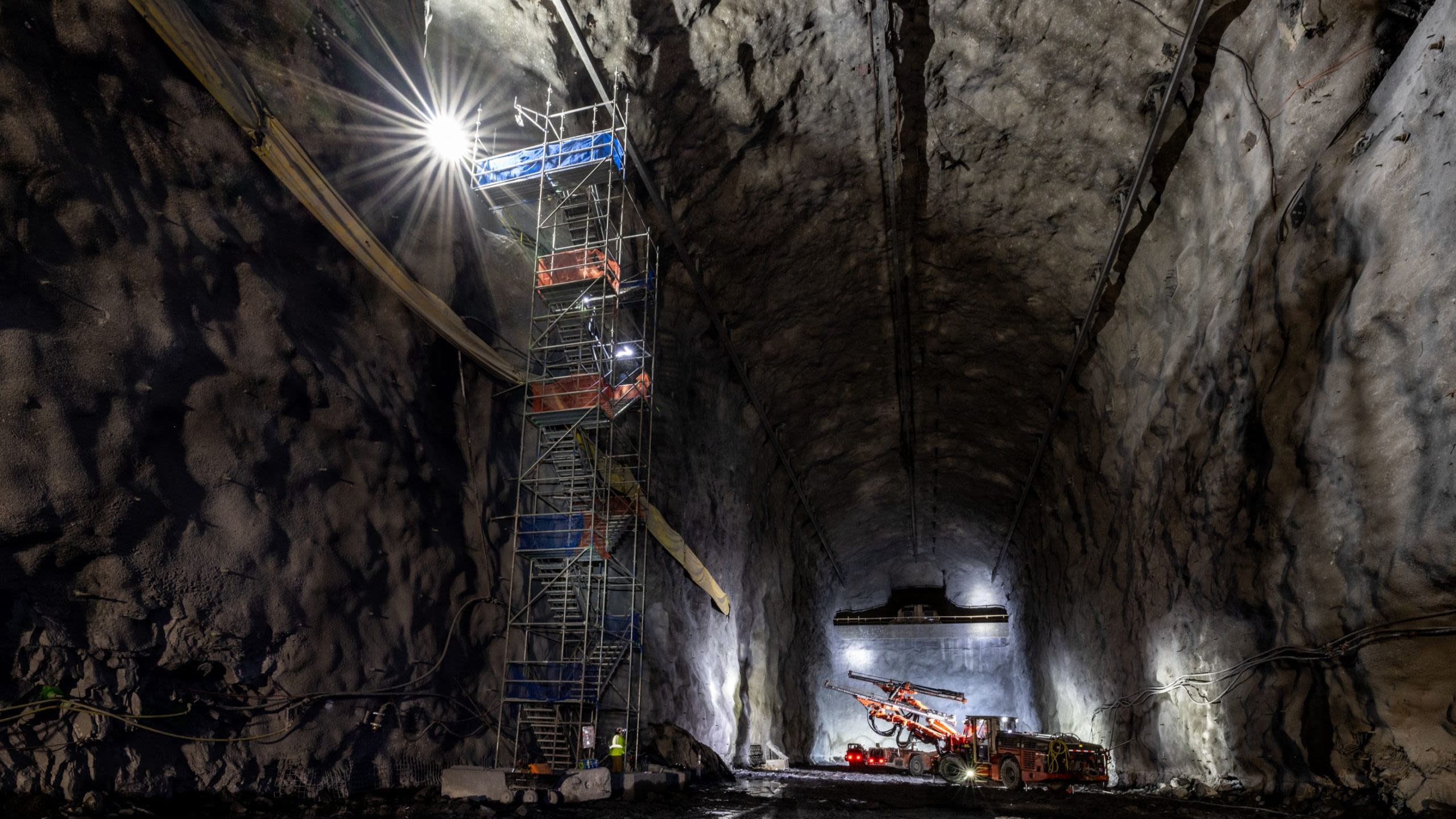Colossal caverns ready for Deep Underground Neutrino Experiment

The Deep Underground Neutrino Experiment (DUNE) marked a major milestone in February with the completion of three enormous subterranean caverns that will host the experiment’s far detector. Located a mile underground at the former Homestake gold mine in Lead, South Dakota, the caverns are the core of a research facility that spans an underground area about the size of eight football fields. Workers spent almost two years blasting through 800,000 tons of rock to create the caverns.
DUNE will study an intense neutrino beam that will be produced at Fermilab near Chicago and fired 810 miles through the Earth to reach the far detector, which will be comprised of four huge liquid argon time projection chambers, each weighing 10,000 tons. When a neutrino interacts in the detector, the resulting charged particles will ionise the liquid argon, allowing DUNE to create incredibly detailed three-dimensional images of the neutrino interaction. With the caverns excavated, work can now begin on preparing them for installation of the detectors later this year.
The Cambridge DUNE group at the Cavendish Laboratory has been a core member of the international project since its beginning, contributing to the experiment’s hardware and software. “We are very excited to have reached this milestone,” said Melissa Uchida, leader of the Cambridge DUNE group and Associate Professor of High Energy Physics. “This momentous moment paves the way for our scientists to begin to answer some of the most fundamental questions of the Universe, for example to determine if neutrinos are partly responsible for the existence of our matter dominated Universe."
DUNE’s physics goals include determining whether neutrinos violate charge-parity symmetry, which relates matter to antimatter, figuring out the ordering of the three different neutrino mass states, as well as studying how supernovae explosions create neutron stars and black holes through the intense bursts of neutrinos that they emit. DUNE faces stiff competition from other neutrino experiments around the world, in particular the Hyper Kamiokande experiment currently under construction in Japan. In the race to be the first to unravel the many mysteries around some of nature’s most elusive particles, the completion of the experiment’s new home marks a significant step toward forward. DUNE’s scientists are now itching to begin installation of their vast new detectors.